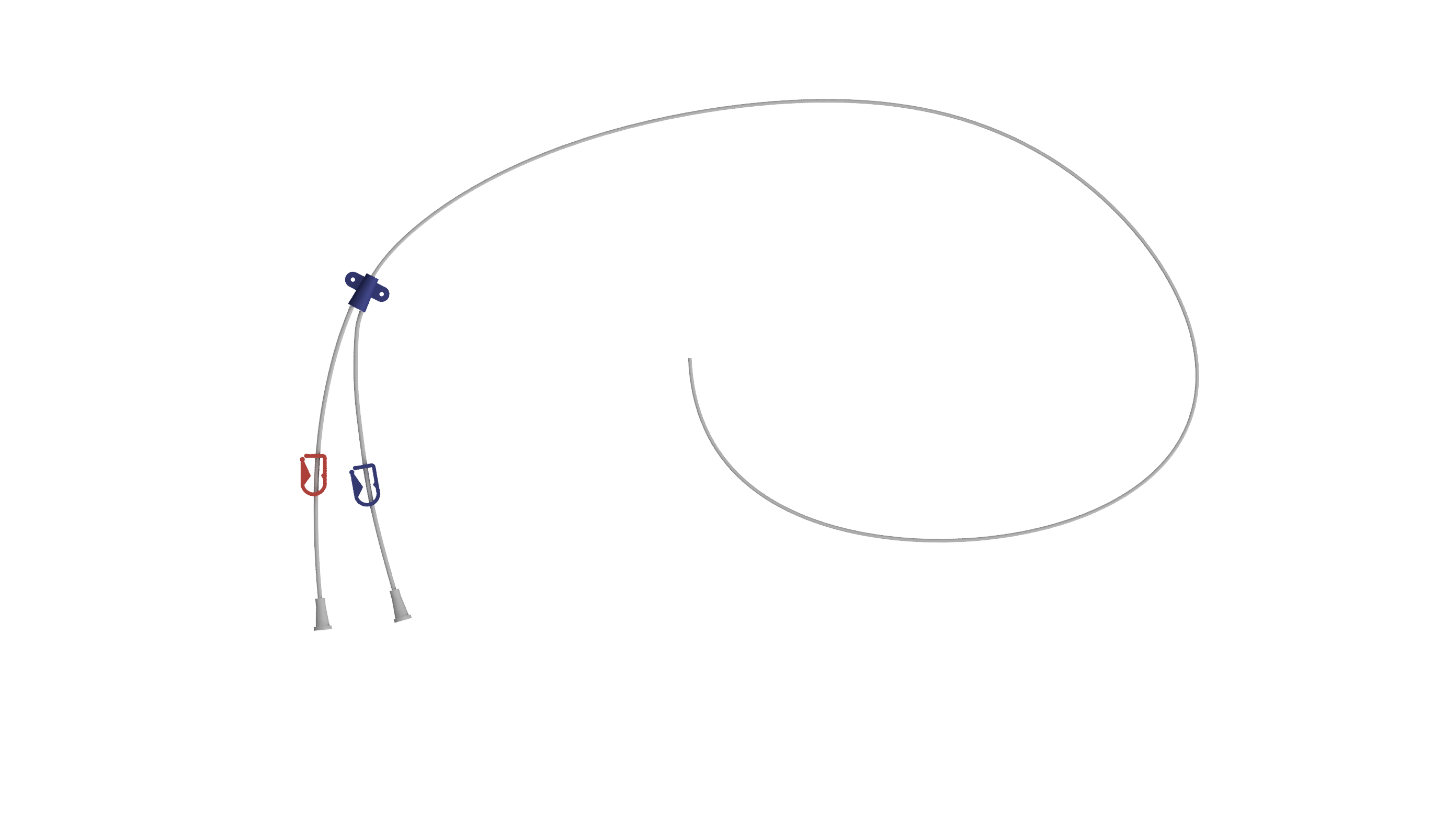Introducing the PICC (Peripherally Inserted Central Catheter)

A PICC (Peripherally Inserted Central Catheter) is a long, thin, flexible tube that is inserted through a vein in the upper arm and passes through to the larger veins near the heart. PICCs are commonly used in various healthcare settings, including hospitals, clinics, and home care, providing a convenient and reliable option for patients requiring extended intravenous therapy. They are considered a less invasive alternative to other types of central venous access devices (CVAD) due to the ease of insertion and removal.
Why Choose a PICC?
Choosing a PICC can offer several advantages depending on your medical needs, however it is important to also consider a tunnelled CVAD or Portacath as these may be more suitable for your lifestyle. Here are some reasons why you might consider a PICC:
Ease of Insertion and Removal: The process of inserting and removing a PICC is typically less complex compared to some other central venous access devices. This can result in reduced discomfort during these procedures.
Long-Term Intravenous Therapy: PICCs are suitable for patients requiring extended intravenous therapy, such as chemotherapy, antibiotic treatment, or nutritional support. They can remain in place for weeks to months, providing a reliable access point for ongoing treatments.
Versatility in Healthcare Settings: PICCs are commonly used in various healthcare settings, including hospitals, clinics, and home care. This versatility makes them a convenient option for patients receiving treatment in different environments.
Reduced Risk of Infection: PICCs are associated with a lower risk of infection compared to certain other types of catheters.
Flexibility with Medication Administration: PICCs often come with multiple lumens, allowing for the simultaneous administration of different medications or fluids. This flexibility can be beneficial for patients with complex treatment regimens.
When considering a PICC, it’s important to consult with your healthcare team. They will evaluate your specific medical condition, treatment plan, and individual preferences to determine if a PICC is the most suitable central venous access option for you.
How is a PICC Inserted?
The PICC insertion is conducted in sterile radiology operating theatres, utilising local anaesthesia to ensure complete numbness in the arm at the insertion site, guaranteeing a painless procedure. While brief, mild pressure sensations may be experienced, they are of very short duration. Sedation is available upon request for all patients to enhance the overall experience, although it is seldom necessary for PICC insertion.
Ultrasound and X-rays work in tandem to visualise the veins and the device, ensuring precise catheter placement at the selected location. A single, minor scar of approximately 0.5cm is typical on the inner aspect of the upper arm, serving both as the access point for the vein and the exit point for the catheter. Sutures are generally unnecessary, but occasional application of glue may be used to secure the device to the arm.

The entire procedure typically lasts between 10-20 minutes, with most patients ready to leave approximately 60 minutes after completion. If sedation is administered, the recovery period may be slightly extended, and it is crucial to arrange for someone to drive you home afterward.
How Are PICCs Used?
Given the widespread prevalence of PICCs within the healthcare setting PICCs are easily accessed thanks to the universal connectors at the catheter’s end. After ensuring the device is meticulously cleaned, a standard syringe can be effortlessly connected. Typically, the catheter is aspirated, drawing back a small amount of blood to ensure it is unobstructed. Subsequently, medications can be administered either through a syringe or an infusion pump.
Post-procedural Care Recommendations:
As a part of the PICC extends outside the body, it’s crucial to take precautions to prevent accidental dislodging. While Dr. Simpson ensures a securement device will be used to attach the PICC to your arm, it is essential to be vigilant in safeguarding the device from potential snagging.
Complete soaking of the area should be avoided, and showers can be taken by standing to the side and carefully washing around the site. When drying, use a gentle dabbing motion with a towel instead of rubbing. While some sports and exercise can be resumed after 14 days, due to the site of the PICC on the upper arm, it is advisable to refrain from contact sports and swimming for the duration the PICC is in place.
The local anaesthetic provides numbness for a few hours post-procedure, and any subsequent mild discomfort or pain can be managed with common painkillers such as Paracetamol and Ibuprofen, although these are rarely necessary. Many individuals report a mild ‘bruising’ ache at the site for a few days until the swelling and inflammation subside.
To maintain the continued functionality of the PICC, a weekly flush with saline is recommended. If your treatment schedule is more frequent, flushing will coincide with your sessions. When the device is no longer needed, removal is painless and is simply pulled out of the arm by a nurse, with a small dressing applied for a few days afterwards.
Reassurance Regarding Possible Complications:
While no medical procedure is entirely without risk, Dr. Simpson will thoroughly discuss specific concerns during the consent process. Rest assured, every precaution will be taken to prioritise your safety and minimise any potential delays in your treatment.
It’s important to note that bruising around the site is a common occurrence, especially if you are taking medications to ‘thin’ your blood but can be minimised by limiting activity in the first 48hrs.
Due to PICCs being placed into smaller veins compared to other CVADs, there is a slightly increased risk of a blood clot forming around the catheter inside the vein, causing occasional swelling in the arm, however such occurrences are rare. In this unlikely event, a discussion between your team will take place to decide on either removing the PICC or starting you on blood-thinning injections.
While complications such as device failure, infection, or damage to other structures (such as nerves) are exceedingly rare, it’s essential to emphasise that thorough measures are in place to address and mitigate these possibilities. Your well-being and the success of your treatment remain our utmost priorities throughout this process.
OPENING HOURS
| Monday | 14:00 – 20:00 |
| Tuesday | 18:00 – 20:00 |
| Wednesday | 18:00 – 20:00 |
| Friday | 14:00 – 20:00 |
OFFICE LOCATIONS








